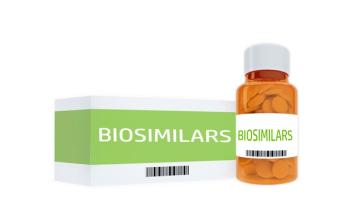
Trends Shaping Direct to Patient in Pharma: Q&A with Scott Snyder
EVERSANA’s chief digital officer discusses recent developments in the pharma industry that are impacting its relationship with patients and new technology.
Direct-to-patient (DTP) models are being utilized more and more in recent years. While this provides pharma companies with new opportunities to reach patient populations, it also creates new complications that they need to find solutions for. Scott Snyder, chief digital officer at EVERSANA, spoke with Pharmaceutical Executive about these types of models and the solutions that companies are employing.
Pharmaceutical Executive: Have direct to patient models taken off in the pharma industry as many have thought over the past year following the success of brands like Lilly?
Scott Snyder: DTP models have been in the news a lot the past year, especially with GLP-1s. Multiple different pharma companies have demonstrated the potential of these models to enhance patient engagement and streamline access to therapies. We've seen a notable shift towards patient-centered care, with more companies adopting DTP strategies to meet the evolving expectations of today's healthcare consumers and drive efficiencies in their commercial models. It’s still early, and it's not for every therapeutic area, but it certainly still is top of mind with manufacturers.
PE: What are the common hurdles brands face when considering a direct to patient model?
Snyder: First, direct-to-patient requires pharma companies to re-organize their capabilities around a seamless patient journey vs historically siloed activities across the commercial value chain which is a major shift in both operating model and mindset.Without an integrated end-to-end experience that educates and engages patients in the most appropriate way and helps them get to the right therapy in the most efficient way, DTP solutions will undershoot their potential.
Other challenges include navigating legal and regulatory complexities for DTP programs such as telehealth guidelines, data privacy laws, and pharmacy/distribution rules which means bringing the right expertise upfront in the design process is critical.
Additionally, selecting the right partner that can integrate the right digital tools and platforms to create a seamless patient experience with a proven compliant approach is important to achieve maximum impact for DTP programs as we have seen at EVERSANA in working with several clients on DTP solutions.
PE: What technology-focused questions should brands consider as they explore direct-to-patient models?
Snyder: When exploring the concept of a direct-to-patient model, lots of questions should be considered out of the gate. Chief among them is connecting all the necessary internal stakeholders to make sure it can be done. Common questions I hear and see include:
- How can we leverage data analytics to identify and engage the right patient populations?
- What digital tools can enhance patient on-boarding, support and adherence?
- How can we ensure data privacy and security in our digital interactions?
- What role can telehealth and remote monitoring play in our DTP strategy?
- How can we integrate AI to personalize patient experiences and improve outcomes?
- How can we select and integrate with the appropriate partners to create a modular DTP capability that can be leveraged across brands?
These are just a sampling of a much larger discussions team must have before they head down the path of direct to patient considerations, but it's a journey that can certainly benefit the patient but also the manufacturer.
PE: What role does AI play in these models?
Snyder: AI plays a crucial role in DTP models by enabling personalized patient engagement and improving overall efficiency. AI can help identify undiagnosed or misdiagnosed patients, provide tailored educational content and self-assessment tools, personalize the on-boarding and fulfillment experience as well as provide digital adherence support backed by humans to keep patients on therapy. In addition, AI is used to measure and extract insights from the end-to-end DTP journey and recommend engagement strategies to optimize each stage to improve efficiency and impact.
PE: Is there a specific therapeutic area or company size ideally suited for direct-to-patient?
Snyder: DTP models are particularly well-suited for therapeutic areas where there are access challenges, relatively long wait time to see a doctor, and/or patients place a high value on convenience and speed to diagnosis and treatment. This can span across categories such as weight loss, diabetes, migraines, anti-infectives and women’s health as well as rare disease and even mature products with high brand affinity.
Smaller companies and startups can also benefit from DTP models as they offer a cost-effective way to reach and support patients without the need for extensive investments in traditional marketing, sales, and patient support functions. Likewise, larger pharma companies with established brands can leverage DTP models to enhance patient loyalty and streamline their commercial operations.
PE: What’s the biggest lesson EVERSANA has learned as it has helped companies?
Snyder: One of the biggest lessons we've learned at EVERSANA is the importance of an integrated, modular, patient-centric approach that can be adapted for different products and patient journeys. This starts with identifying the right patients, tailoring the engagement model to their unique healthcare journey, empowering them to take action once they understand their condition, streamlining fulfillment to get them on therapy, and personalizing on-going engagement to improve adherence and retention. By focusing on the needs and preferences of patients, we can create more effective and engaging DTP models.
Additionally, we've found that integrating various digital tools and platforms is key to providing a seamless patient experience as well as creating a cross-functional approach inside of pharma need to launch and scale DTP solutions including brand, digital/technology, patient services, market access, and legal/compliance teams.
PE: Where do you see these models headed?
Snyder: Looking ahead, I believe DTP models will continue to evolve and become more sophisticated with technologies like AI to further personalize patient experiences and improve outcomes. Additionally, as regulatory frameworks adapt to these new models and pharma begins to reorganize its capabilities around DTP solutions, we will likely see broader adoption across the industry and for a wider range of therapeutic areas. Ultimately, direct to patient models have the potential to transform the way we deliver healthcare, making it more patient-centered, efficient, and accessible.
Newsletter
Lead with insight with the Pharmaceutical Executive newsletter, featuring strategic analysis, leadership trends, and market intelligence for biopharma decision-makers.




